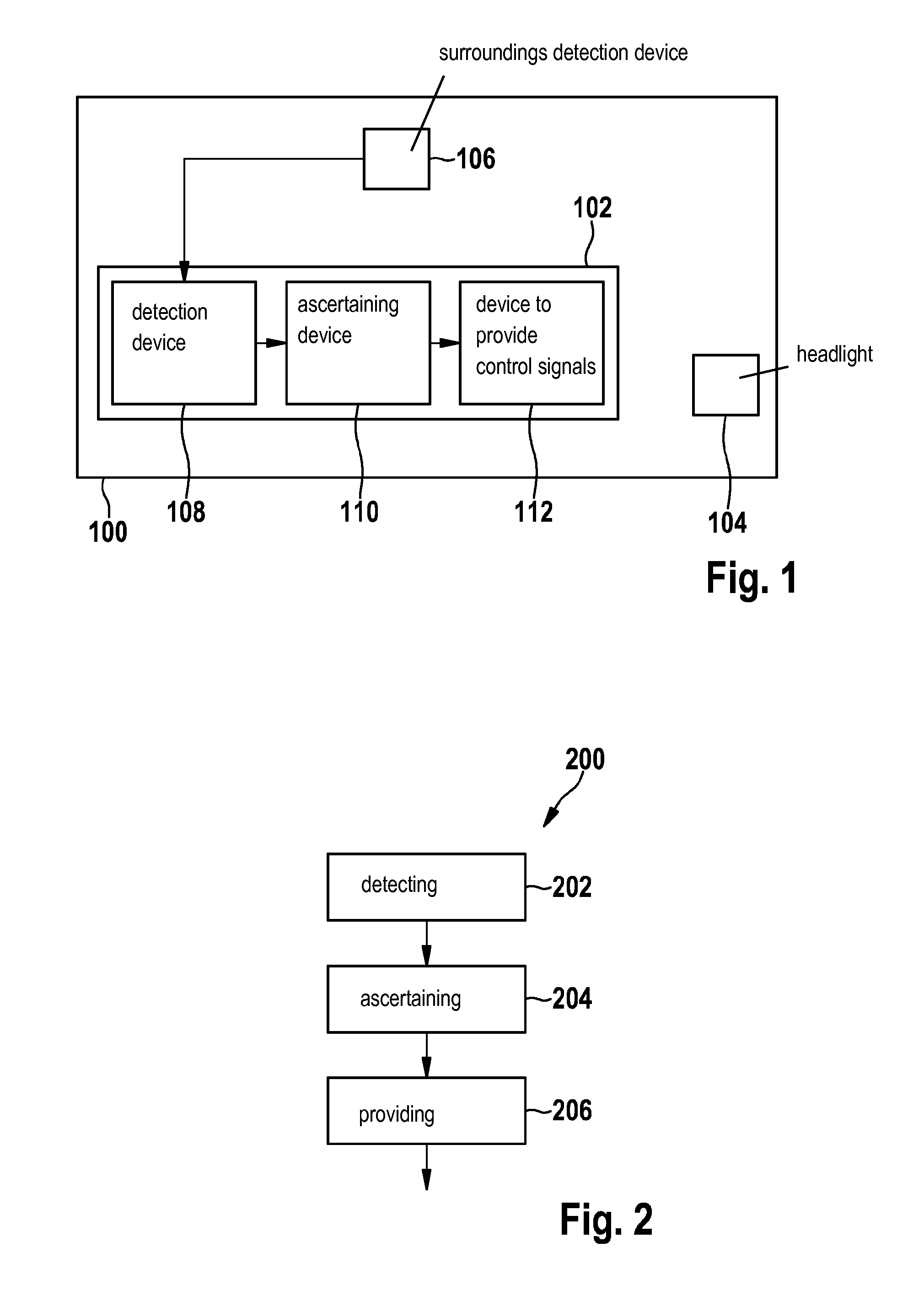Method and control unit for adapting an upper headlight beam boundary of a light cone
a control unit and light cone technology, applied in the direction of vehicle position/course/altitude control, process and machine control, instruments, etc., can solve the problems of blinding of the driver of the other vehicle, the risk of low relative position being higher, etc., to achieve greater distance between the vehicle and the other vehicle, reduce blindness, and increase safety value
- Summary
- Abstract
- Description
- Claims
- Application Information
AI Technical Summary
Benefits of technology
Problems solved by technology
Method used
Image
Examples
Embodiment Construction
[0041]In the following description of preferred exemplary embodiments of the present invention, identical or similar reference numerals are used for the elements having a similar action which are illustrated in the various figures, and a repeated description of these elements is dispensed with.
[0042]FIG. 1 shows an illustration of a vehicle 100 having a control unit 102 for adapting an upper headlight beam boundary of a light cone of at least one headlight 104 of vehicle 100 according to one exemplary embodiment of the present invention. Vehicle 100 has a surroundings detection device 106 and the at least one headlight 104. Surroundings detection device 106 is designed to provide information or an image concerning a detection range of surroundings detection device 106 for control unit 102. Control unit 102 is designed to provide a control signal for the at least one headlight 104 in response to the information. Control unit 102 has a detection device 108, a device for ascertaining 1...
PUM
 Login to View More
Login to View More Abstract
Description
Claims
Application Information
 Login to View More
Login to View More - R&D
- Intellectual Property
- Life Sciences
- Materials
- Tech Scout
- Unparalleled Data Quality
- Higher Quality Content
- 60% Fewer Hallucinations
Browse by: Latest US Patents, China's latest patents, Technical Efficacy Thesaurus, Application Domain, Technology Topic, Popular Technical Reports.
© 2025 PatSnap. All rights reserved.Legal|Privacy policy|Modern Slavery Act Transparency Statement|Sitemap|About US| Contact US: help@patsnap.com



